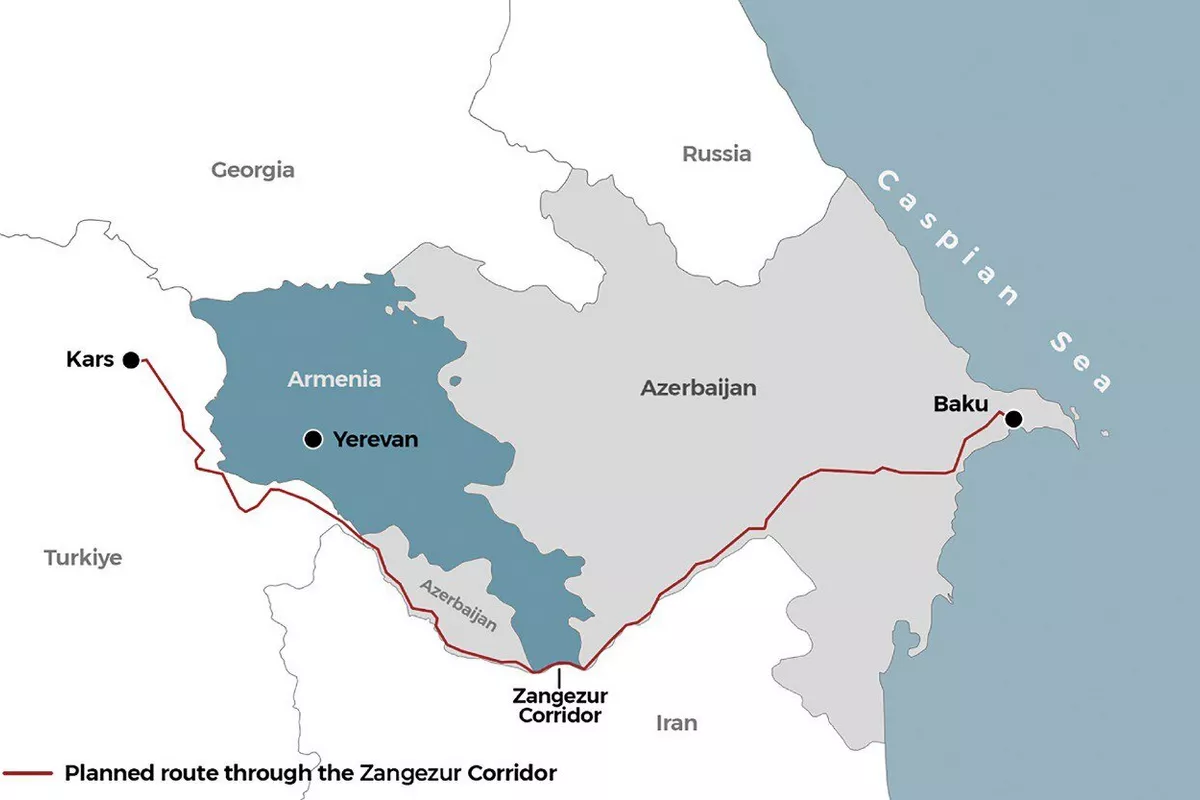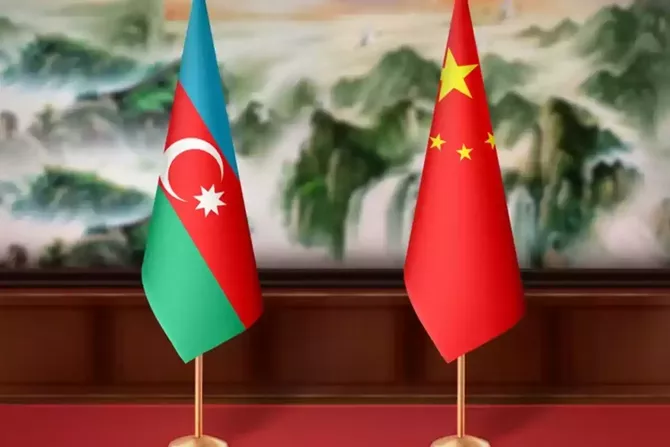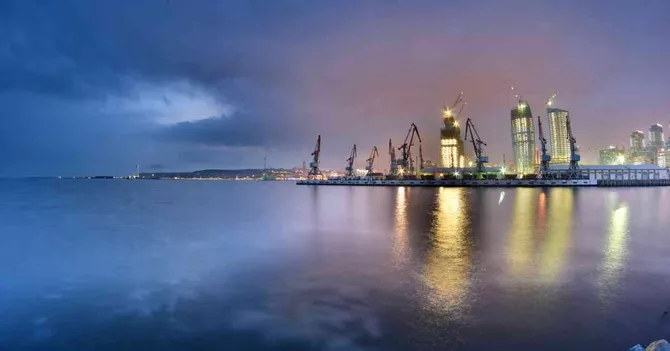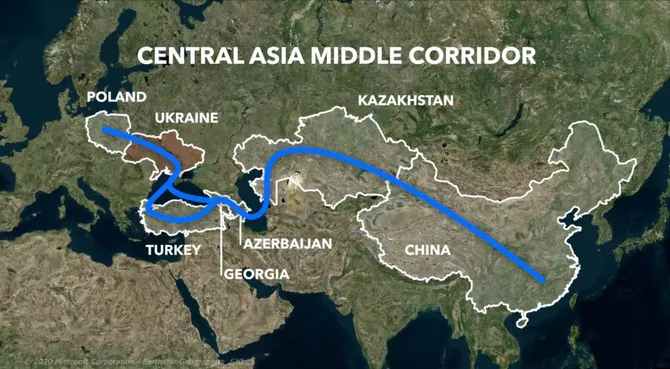
TV journalist, documentary filmmaker, and political analyst Anastasia Lavrina is well known to audiences for her in-depth reports and insightful analytical pieces. This time, her focus is on the global processes shaping the future of Eurasia. Under her leadership, the film crew traveled across key points of the modern "Silk Road"-from ancient Xi’an to innovative Shenzhen-highlighting how the Belt and Road Initiative is forging new pathways of cooperation and opening fresh opportunities for countries in the region.
Azerbaijan holds a special place in this context-as a strategic hub of the Middle Corridor and a vital link between East and West. In her interview, Lavrina explores how China views Baku’s role in Eurasian integration today, what opportunities the Zangezur Corridor presents, how the Organization of Turkic States is emerging as a pillar for building a “Eurasian Bridge,” and why transport projects are evolving into civilizational undertakings.

- Ms Lavrina, you have personally visited key points along the major transport routes of the Eurasian continent. How does China today perceive Azerbaijan’s role in the Belt and Road Initiative and in unlocking the transport and logistics potential of the Middle Corridor?
- Thank you for the question. When our AnewZ film crew visited China and explored key centers-from Xi’an, where the modern story of China-Europe freight trains begins, to Shenzhen, a symbol of innovation and technological breakthrough-one message came through in every conversation: today, Azerbaijan is regarded as a strategic hub of the Belt and Road Initiative and a key player in realizing the full potential of the Middle Corridor. For China, it is not only the route itself that matters, but also the reliability of its partner. Azerbaijan has proven its ability to ensure stability amid regional and global challenges. Investments in railway networks, the development of Caspian seaports, and the modernization of logistics centers in Baku and Alat-all of these factors make the country a natural hub between East and West.
Today, as traditional transport routes face growing challenges-whether due to political crises, sanctions pressure, or overloaded infrastructure-the spotlight is shifting to the Middle Corridor. In this context, Azerbaijan is not just a transit country but also a coordinator, aligning the interests of China, Central Asia, the South Caucasus, and Europe.
- How could the opening of the Zangezur Corridor reshape China’s cargo routes in the region and strengthen Azerbaijan’s position as a vital link between East and West?
- China views the launch of the Zangezur Corridor primarily as an internal matter for Azerbaijan and the wider region. In a broader context, it is clear that peace between Baku and Yerevan and the development of transport infrastructure are of great importance to Beijing as well. From China’s perspective, stability in the South Caucasus directly affects the efficiency of the Middle Corridor and the overall success of the Belt and Road Initiative. China has traditionally supported Azerbaijan’s territorial integrity- a principled stance that Beijing has reaffirmed on numerous occasions. In turn, Azerbaijan has consistently upheld the “One China” policy. This mutual support on sovereignty issues strengthens trust between the two countries and elevates their cooperation to a more strategic level.
Therefore, it is quite possible that, in the long term, China will view the opening of the Zangezur Corridor not only as an expansion of logistical opportunities but also as the outcome of a peace process that provides new guarantees for the stable development of Eurasia as a whole.
- From a logistics perspective, how does China view the countries of the Organization of Turkic States? Do they see a real opportunity to build a “Eurasian Bridge” there?
- From a logistics perspective, China sees the countries of the Organization of Turkic States as a natural framework for building a “Eurasian Bridge.” These Turkic nations link Central Asia with the Caucasus and Türkiye, forming a unified transport corridor that nearly halves the delivery time for goods from China to Europe compared to traditional maritime routes. The visit to China revealed that Beijing is closely monitoring how the countries of the Organization of Turkic States coordinate their efforts in developing infrastructure-whether it’s railways, Caspian seaports, or digital platforms designed to streamline trade.

Chinese experts openly state that if this potential is developed consistently and in a spirit of cooperation, it could lead to the creation of the “Eurasian Bridge” that provides a reliable alternative to the Northern and Southern routes. At the same time, Beijing is developing bilateral cooperation with each country of the Organization of Turkic States individually: with Azerbaijan in transport, energy, and green technologies; with Kazakhstan in transit routes and raw materials sectors; with Uzbekistan in industry and the automotive sector; and with Türkiye as the final link of the Middle Corridor and a gateway to Europe.
This comprehensive approach-through both regional frameworks and bilateral ties-reinforces China’s confidence that the Organization of Turkic States will become a key link in the Eurasian logistics network of the future.
- Today, cooperation between China and Azerbaijan goes beyond transport. What prospects do you see in energy, digital technologies, and the green economy within the broader context of Eurasian integration strategy?
- That’s absolutely correct. Today, cooperation between China and Azerbaijan extends far beyond transport. During Azerbaijani President Ilham Aliyev’s visit to Beijing in April 2025, the two sides signed a Declaration on Comprehensive Strategic Partnership, marking a new stage in the development of bilateral relations. This document set priorities not only in trade and logistics but also in energy, digital technologies, and the green economy. In the energy sector, particular emphasis is placed on environmentally friendly projects. Chinese company BYD delivered 160 electric buses to Baku ahead of the COP29 conference and is preparing investments to establish a new manufacturing facility in Azerbaijan. This marks a step toward developing sustainable mobility and reducing the carbon footprint.
In the digital sector, Huawei holds a prominent role, with its office operating in Azerbaijan for over 20 years. The company actively supports the country’s digital transformation, develops ICT infrastructure, and contributes to the training of local talent. Thus, today we see not only transport and transit cooperation but the emergence of a multi-layered partnership-spanning energy, technology, and environmental initiatives. All of this strengthens Azerbaijan’s role as a vital link in Eurasian integration and demonstrates that Beijing and Baku are committed to a long-term strategy of collaboration.
- Your film highlights not only infrastructure but also people. What role do humanitarian and cultural ties between China and Azerbaijan play in strengthening the Middle Corridor? Can we say that the “route” is becoming not just a trade pathway but a civilizational one as well?
- This is a very important project, which, in my view, will also play a role in strengthening bilateral ties. Our film-a major AnewZ project, shot across four Chinese cities-is the first of its scale to appear on Azerbaijani television. We aimed to showcase not only the infrastructure but also the development of China itself-the world’s second-largest economy-highlighting the factors that enabled the country to rapidly progress from industrialization to global leadership in innovation and green technologies.

The film reveals that the Middle Corridor is more than just a trade artery. It encompasses humanitarian ties, cultural exchanges, education, and joint initiatives. Our visit to China showed that Beijing is closely observing how Azerbaijan develops these areas and values the role Baku plays in fostering trust and dialogue. It is fair to say that the “route” is becoming not only a trade corridor but also a civilizational one. The Middle Corridor-fully supported by Azerbaijan, Türkiye, and the Central Asian countries-aligns with China’s vision for developing the Belt and Road Initiative in this region. This convergence of interests strengthens the strategic partnership between Baku and Beijing, encompassing transport, green energy, digital technologies, and cultural projects. It is precisely the human factor that makes this cooperation sustainable and long-term.
I would like to extend a special thanks to the Embassy of China in Azerbaijan, which fully supported our initiative. Thanks to their assistance, our team was able to carry out the filming at such a high level and present unique material that will be broadcast on Azerbaijani television for the first time.
Our film, “Belt and Road Initiative: China’s Global Vision”, reflects this new reality: it shows that the Middle Corridor is not just about roads and trains, but also about values, people, and ideas. In this sense, it embodies how Azerbaijan and China are creating not merely an economic route, but a civilizational bridge.
Share on social media